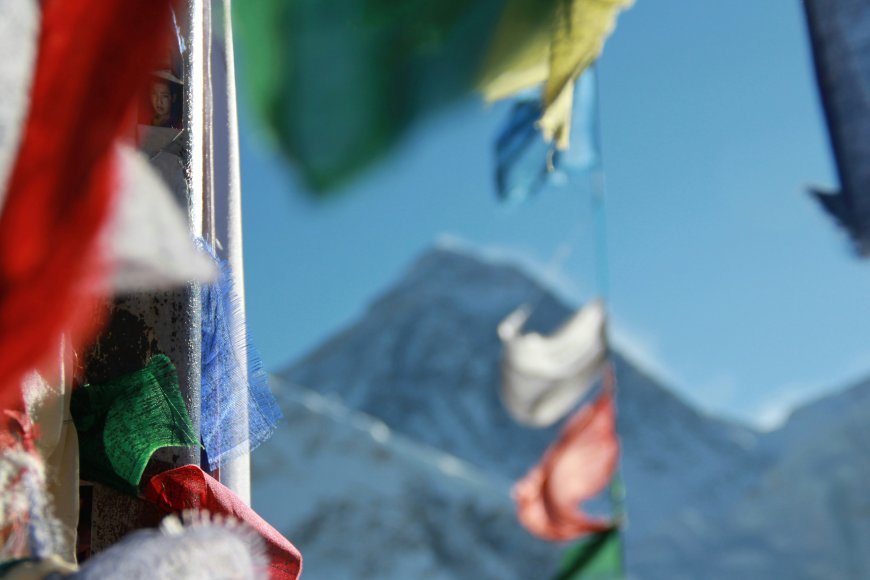Best Time to Do the Everest Base Camp Trek: When Should You Go?
The Everest Base Camp Trek offers stunning views of the world’s tallest mountain. Discover the best time to go so you can enjoy clear skies, pleasant weather, and a safe journey.

The Everest Base Camp Trek is one of the most popular treks in the world. Many dream of standing at the foot of the worlds tallest mountain, Mount Everest. But if you want to make the most of this incredible journey, knowing the best time to go is very important. Choosing the right season can make your trek safer, more comfortable, and full of beautiful views.
Why Timing Matters for Everest Base Camp Trek
Trekking in the Everest region means facing changing weather, temperatures, and crowd levels. The right time helps you avoid heavy snow, strong winds, and cold nights. It also lets you enjoy clear mountain views and friendly tea houses. So when is the best time to take this adventure?
Trekking Facts: Length, Distance, and Altitude
Before we dive into the best season, here are some key facts about the trek:
-
Average Length: 12 to 14 days
-
Total Distance: About 130 kilometers (80 miles) round trip
-
Maximum Elevation: 5,364 meters (17,598 feet) at Everest Base Camp
-
Starting Point: Lukla
This trek is not just long but also high in altitude, so weather and seasons play a big role.
Spring: March to May
Spring is one of the best times to do the Everest Base Camp Trek. During this season, the weather starts to warm up. The days are sunny, and the skies are mostly clear, giving fantastic views of Everest and other big peaks. You will see rhododendron forests bursting with colorful flowers along the trail.
The temperatures during the day can reach 10 to 15C (50 to 59F), but nights are still cold, especially at high altitudes. Spring is also popular among trekkers, so expect more people on the trails and in tea houses.
Autumn: Late September to November
Autumn is another favorite time for trekkers. After the monsoon rains, the air is fresh and clean, and the mountain views are sharp and clear. The weather is stable with less chance of rain or snow.
Temperatures are similar to spring, but nights can be colder. This season offers bright blue skies and beautiful sunsets over the Himalayas. The trails are busy, but the energy is lively and exciting.
Summer (Monsoon): June to August
Summer is the monsoon season in Nepal. The Everest region gets heavy rain and clouds, which can block mountain views. The trails may become muddy and slippery, making trekking harder and less safe.
However, fewer trekkers visit during this time, so if you want solitude and dont mind the rain, summer can be an option. Keep in mind that leeches and insects are common, and some trails might be closed due to landslides.
Winter: December to February
Winter is the coldest season for the Everest Base Camp Trek. Temperatures can drop below -20C (-4F) at night. Snowfall is common, especially above 3,000 meters. Many tea houses close because of the harsh conditions.
Despite the cold, winter offers the clearest skies and stunning mountain views. If you are well-prepared for the cold and want a quiet trek, winter can be special. But this season is not for beginners or those who dislike cold weather.
Emotional Insight: Finding Peace at High Altitude
One early morning near Gorak Shep, I stepped outside before sunrise. The air was cold and crisp. As the first rays of light touched Everests snowy peak, I felt a calm that stayed with me long after the trek ended. This moment showed me that choosing the right time to trek is not just about weatherits about experiencing the mountains at their best, both in beauty and spirit.
Final Thoughts: When to Go?
The best time to do the Everest Base Camp Trek is during spring (March to May) and autumn (late September to November). These seasons offer the best weather, clear mountain views, and lively atmosphere. If you prefer fewer crowds and dont mind some challenges, winter can be magical but cold. Summer is the least popular due to heavy rain and slippery trails.
Tips for Your Trek
-
Book your flights and lodges early during spring and autumn because of high demand.
-
Prepare warm clothing for chilly nights even in spring and autumn.
-
Stay hydrated and take your time to acclimatize to avoid altitude sickness.








&srotate=0)






















